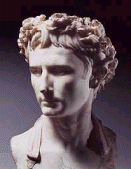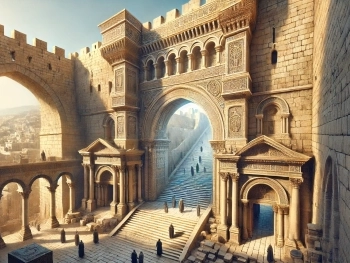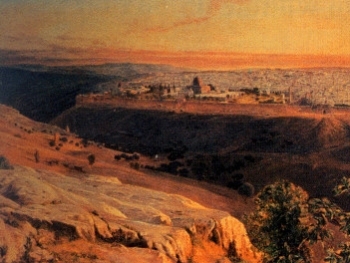
The question of the origins of nations and peoples has fascinated humanity for centuries. From a biblical perspective, the origins of all nations can be traced back to the descendants of Noah’s three sons—Shem, Ham, and Japheth—following the great Flood. This article explores how the Japanese and Chinese peoples might fit into this biblical framework, alongside historical and linguistic evidence.
The Biblical Table of Nations
In Genesis 10, often referred to as the "Table of Nations," the Bible provides a genealogy of Noah’s sons—Shem, Ham, and Japheth—and describes how their descendants spread across the earth. According to this account:
- Japheth is associated with peoples who spread into Europe and parts of Asia.
- Shem is linked to the Semitic peoples, including the Hebrews, Assyrians, and Arabs.
- Ham is connected to peoples of Africa and parts of the Middle East.
The question is: where do the Japanese and Chinese fit into this lineage?
The Descendants of Japheth and Asia
Many biblical scholars suggest that the peoples of East Asia, including the Chinese and Japanese, descended from Japheth, particularly through his sons Gomer, Magog, Madai, Javan, Tubal, Meshech, and Tiras (Genesis 10:2). Japheth’s descendants are believed to have migrated eastward after the Tower of Babel, settling in the vast territories of Asia.
- Magog: Often associated with northern and eastern regions, some traditions link Magog's descendants to the peoples of Central Asia and possibly early proto-Mongolic or Siberian tribes.
- Madai: Associated with the Medes, some theorize that descendants of Madai could have influenced the migrations leading to East Asia.
The Spread of the Chinese People
China's history is among the oldest recorded, with the first dynasties appearing around 2100 BCE. However, long before the establishment of organized kingdoms, the ancestors of the Chinese people likely migrated eastward after the dispersion at Babel (Genesis 11). Linguistic studies show that Sino-Tibetan languages, which form the basis of Chinese, have ancient roots.
From a biblical viewpoint, the Chinese people may represent a group of Japheth’s descendants who developed a unique culture and language over time. Their long-standing emphasis on familial honor, moral codes, and ancestor veneration aligns with many early post-Babel traditions.
The Origin of the Japanese People
The Japanese archipelago presents a slightly different case. The Japanese people are believed to have descended from a mix of ancient migrants, including:
- Early inhabitants who crossed land bridges from Asia during the Ice Age.
- Later migrants, such as the Yayoi people, who brought advanced agriculture and metallurgy around 300 BCE.
From a biblical perspective, the Japanese may also trace their lineage to Japheth’s descendants, who migrated eastward and settled the islands. The isolation of Japan allowed its culture to develop uniquely, yet early Japanese traditions often reflect themes found in other ancient cultures, such as creation myths and a connection to divine ancestry.
Parallels Between the Bible and East Asian Traditions
Interestingly, some ancient Chinese and Japanese traditions contain echoes of biblical truths:
- The Chinese Characters for Creation
Ancient Chinese characters seem to retain elements of biblical narratives. For example:- The character for "boat" (船) includes the radicals for "vessel" and "eight," possibly referencing Noah's ark, which carried eight people.
- The character for "righteousness" (義) includes a lamb (羊) over "me" (我), resonating with the biblical theme of righteousness through sacrifice.
- Flood Legends
Both Chinese and Japanese cultures have flood legends that parallel the Genesis account. These stories often describe a great deluge that reshaped the world, similar to Noah’s Flood. - Ancestor Worship
The reverence for ancestors in East Asian cultures aligns with early post-Flood traditions, where genealogies and familial heritage were central to identity.
The Tower of Babel and Cultural Dispersion
The Tower of Babel (Genesis 11) plays a critical role in the dispersion of peoples and the formation of distinct languages and cultures. The division of languages likely caused groups to migrate in different directions, leading to the formation of unique nations.
The Chinese and Japanese peoples, like all nations, originated from this dispersion. Over time, as they settled in different regions, they developed distinct languages, customs, and technologies.
Modern Genetics and Biblical Lineages
Modern genetic studies reveal that the peoples of East Asia share common ancestry with other groups in Asia and even Europe, supporting the idea of a shared origin. This aligns with the biblical view that all humanity descends from Noah’s family. The genetic diversity we see today is the result of thousands of years of adaptation, migration, and cultural development.
The origin of the Chinese and Japanese peoples, viewed through a biblical lens, traces back to the dispersion at Babel and the descendants of Noah. While these ancient civilizations developed their own unique identities, their stories ultimately connect to the shared human history recorded in Scripture.
The Bible reminds us that all nations are part of God's plan, as expressed in Acts 17:26:
"From one man he made all the nations, that they should inhabit the whole earth; and he marked out their appointed times in history and the boundaries of their lands."
Would you like to explore more about the connections between biblical history and other ancient cultures?
Protect your vehicle from damage with a high-quality car cover for hail, just as Noah’s ark shielded life from the stormy flood. A durable cover ensures your car remains safe, no matter the weather.
Tower Of Babel Biblical origins Chinese history Japanese history Noah’s descendants Bible and genealogy Ancient migrations East Asian civilizations Genesis and nations Biblical anthropology











